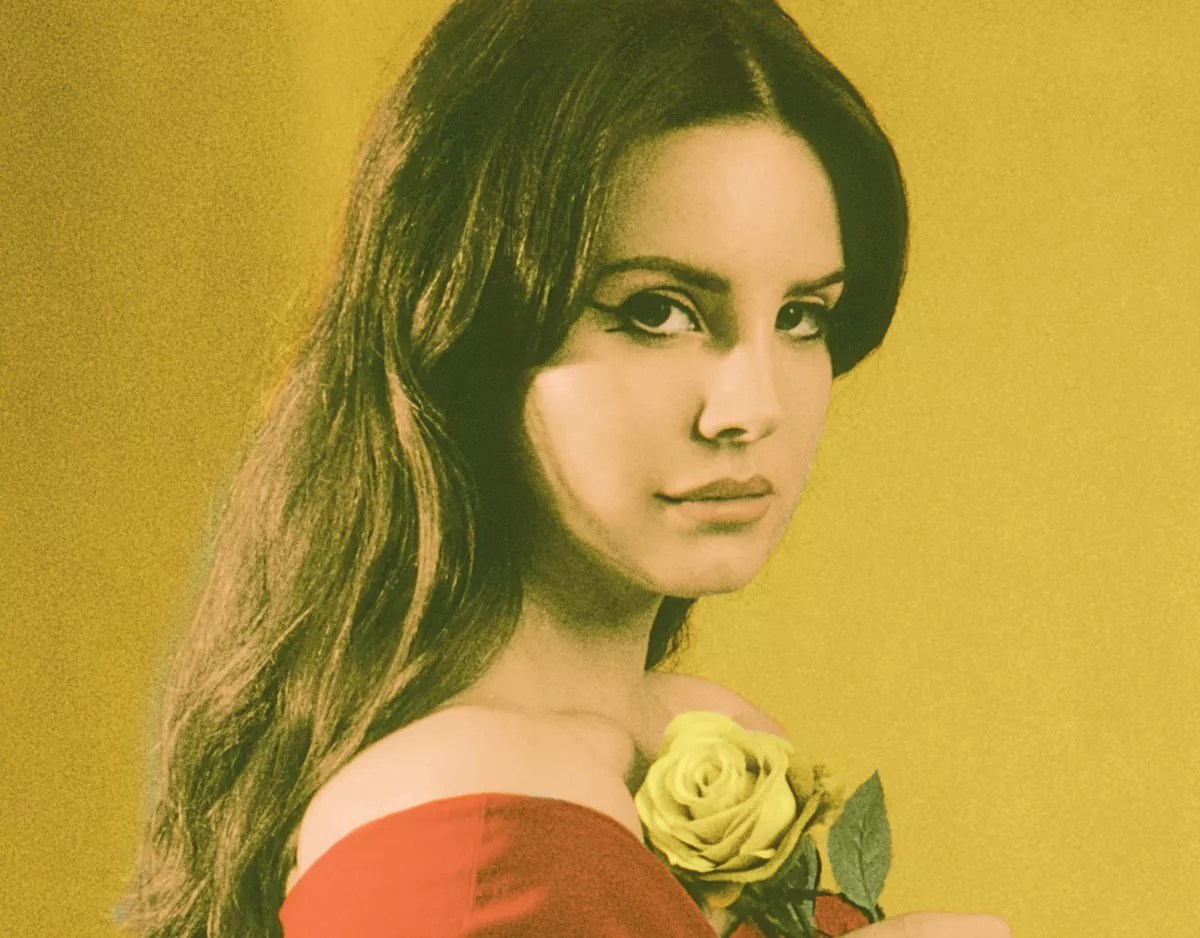
Neil Krug

Audio By Carbonatix
Since her major-label debut, Born to Die, Lana Del Rey has been fascinated with the concept of death. That fixation served her well on her latest record, the ironically named Lust for Life. The opening lines of the title track find Del Rey crooning, “Climb up the ‘H’/Of the Hollywood Sign, yeah/In these stolen moments/The world is mine (do it, do it).” The lyrics are a direct reference to the suicide of Broadway actress Peg Entwistle, who killed herself by jumping off the “H” of the Hollywood Sign in 1932 after her first big role was cut from David O. Selznick’s Thirteen Women.
This is the bread and butter of Del Rey’s public image: embodying the glamorous, tragic aura of Old Hollywood starlets – including their numerous calamities and misfortunes.
Del Rey purposely evokes the dreamy-eyed glitz of classic Hollywood pinup actresses such as Lana Turner (the singer-songwriter’s namesake), Betty Grable, Rita Hayworth, and, of course, the patron saint of tragic Hollywood endings, Marilyn Monroe. However, Del Rey comes off as tragic without suffering any real tragedy (that we know of).
For instance, on “The Blackest Day,” a track off her album Honeymoon, she invokes the name of Billie Holiday as Del Rey comes to terms with a tumultuous breakup. It’s difficult to fathom her having any days blacker than what Holiday experienced throughout her life – abandonment, abusive relationships, lifelong racist attacks, drug and alcohol addition, and becoming a prostitute at the age of 13.
But though she’s been mostly unscathed by fame, Del Rey clearly appreciates the shadowy undercurrent running beneath the Hollywood Walk of Fame and the Yellow Brick Road leading to those immortal stars. Perhaps the best way to understand the character of Del Rey the chart-topper and Grammy winner is by looking at her first album, 2010’s Lana Del Ray A.K.A. Lizzy Grant.
From beginning to end, these songs are a cry for attention. Take, for example, “Brite Lites,” a track off Lizzy Grant that plainly, desperately states “look at me” repeatedly. Then there is “Gramma (Blue Ribbon Sparkler Trailer Heaven),” in which she laments, “I want to be the whole world’s girl, Gramma,” a pathetic notion fraught with danger.
So is this a critique of Hollywood’s dangerous promises or an insightful, self-aware acknowledgment of her own fame-seeking? Both – for Del Rey, they are one and the same, and almost indistinguishable from each other.
“Put Me in a Movie” is one of the more disturbing songs on Lizzy Grant, placing a starlet in the precarious and nauseating position of pleasing a film director, possibly on a casting couch. “Lights, camera, acción/If he likes me, takes me home/Come on, you know you like little girls/Come on, you know you like little girls,” she sings before segueing into the cringe-worthy refrain, “You can be my daddy.“
The album closer, “Yayo” (a street term for cocaine) exists in the same universe as “Put Me in a Movie.” A young woman once again vies for the attention of an older man, a biker this time, to whisk her away from her crappy life to the mecca of reinvention, Las Vegas, third only to L.A. and New York in starting over. She wants to put on a show for him in her “?’50s baby-doll dress.” To say this album has daddy issues is like saying the sun is hot.
Lizzy Grant never received a physical release. It was a commercial failure, perhaps because of the inherent bleakness throughout, in addition to problems with the label and distribution. Or perhaps the album simply wasn’t glamorous enough. Maybe it was too real, existing on the fringes of humanity – too much Norma Jeane, not enough Marilyn Monroe. The sadness was genuine, but the stories, located in gas stations and trailer parks, didn’t have enough radio appeal for people driving to work, trying not to think about the poor souls who actually find themselves in such dire circumstances.
Del Rey had to create her stage persona in order to become successful while still addressing so many of the same issues, often returning to similarly dark territories in later albums. The difference now is that she employs million-dollar production, has the Weeknd and A$AP Rocky at her side, and lures fans through the faux melodrama that appeals to the Coachella set.
She traded in gritty storytelling for a more digestible orchestral pop that gives the people what they want. In return, she gets what she’s always wanted: fame, fortune, and all the notoriety of her beloved Hollywood pinup heroines.
Lana Del Rey. 8 p.m. Thursday, February 1, at the BB&T Center, 1 Panther Pkwy., Sunrise; 954-835-7000; thebbtcenter.com. Tickets cost $35.25 to $120.75 via ticketmaster.com.